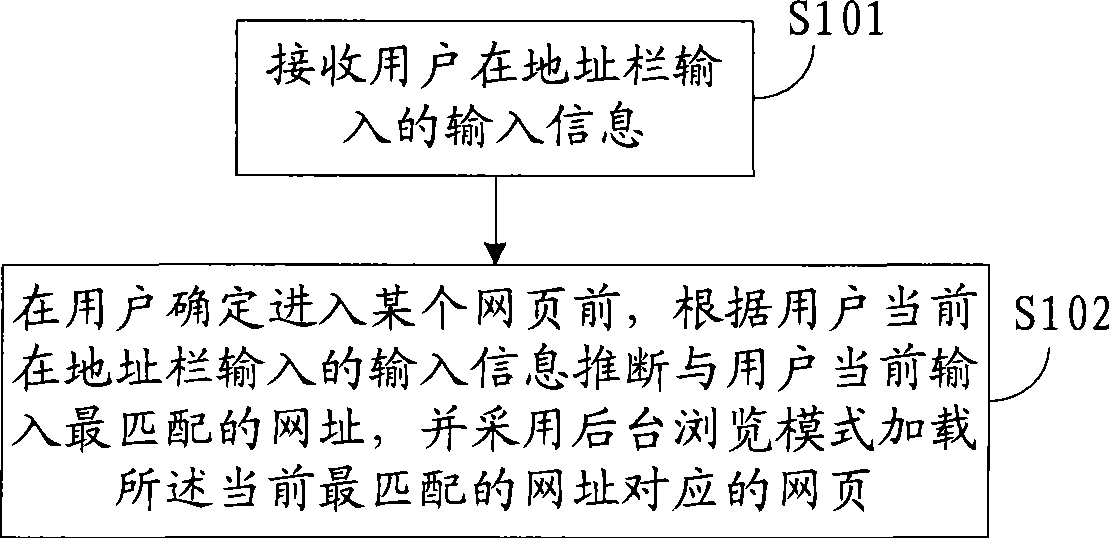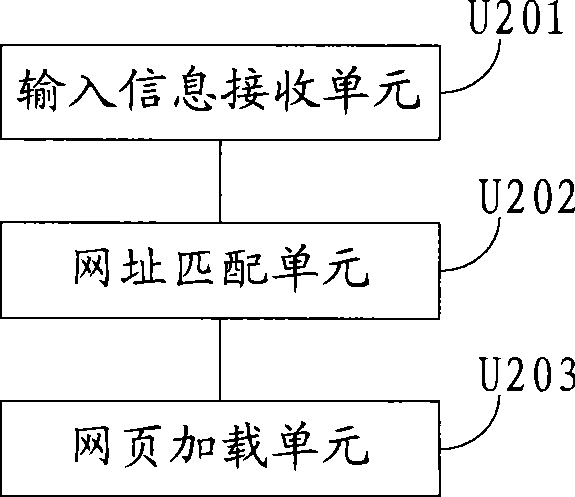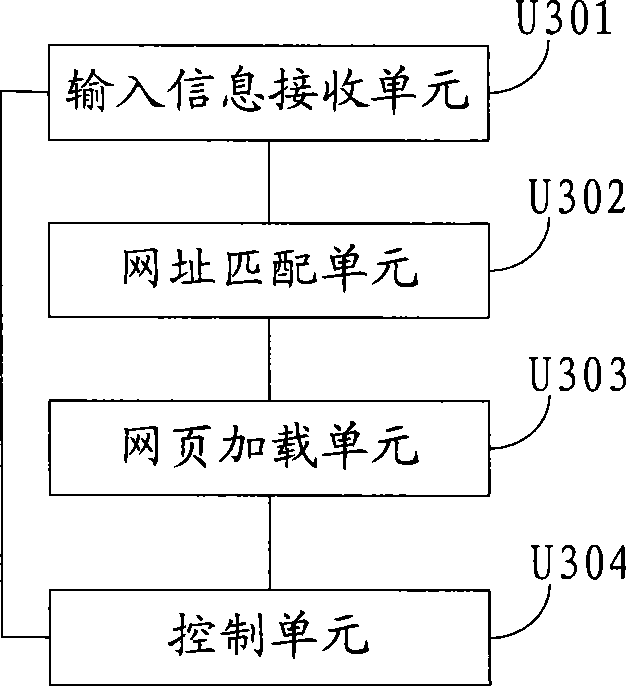Method and apparatus for loading web pages
A webpage and webpage loading technology, applied in the computer field, can solve the problems of not being able to effectively improve the user experience and not reduce the loading time, and achieve the effects of avoiding time conflicts, reducing time intersections, and accelerating speed
- Summary
- Abstract
- Description
- Claims
- Application Information
AI Technical Summary
Problems solved by technology
Method used
Image
Examples
Embodiment Construction
[0047] In order to make the above objects, features and advantages of the present invention more comprehensible, the present invention will be further described in detail below in conjunction with the accompanying drawings and specific embodiments.
[0048] see figure 1 , the method for loading a webpage provided by the embodiment of the present invention includes the following steps:
[0049] S101: Receive input information input by the user in the address bar;
[0050]The input information refers to any information input by the user, such as English, numbers, Chinese and so on. The input information can be the URL of a certain webpage that can be fully expressed, but this embodiment is mainly aimed at most situations of inputting in the address bar, that is, when the input information cannot fully express its actual network address, or even the user does not remember a certain webpage In the case of URLs, only relevant information of some webpages can be remembered, a URL ...
PUM
 Login to View More
Login to View More Abstract
Description
Claims
Application Information
 Login to View More
Login to View More - R&D
- Intellectual Property
- Life Sciences
- Materials
- Tech Scout
- Unparalleled Data Quality
- Higher Quality Content
- 60% Fewer Hallucinations
Browse by: Latest US Patents, China's latest patents, Technical Efficacy Thesaurus, Application Domain, Technology Topic, Popular Technical Reports.
© 2025 PatSnap. All rights reserved.Legal|Privacy policy|Modern Slavery Act Transparency Statement|Sitemap|About US| Contact US: help@patsnap.com



